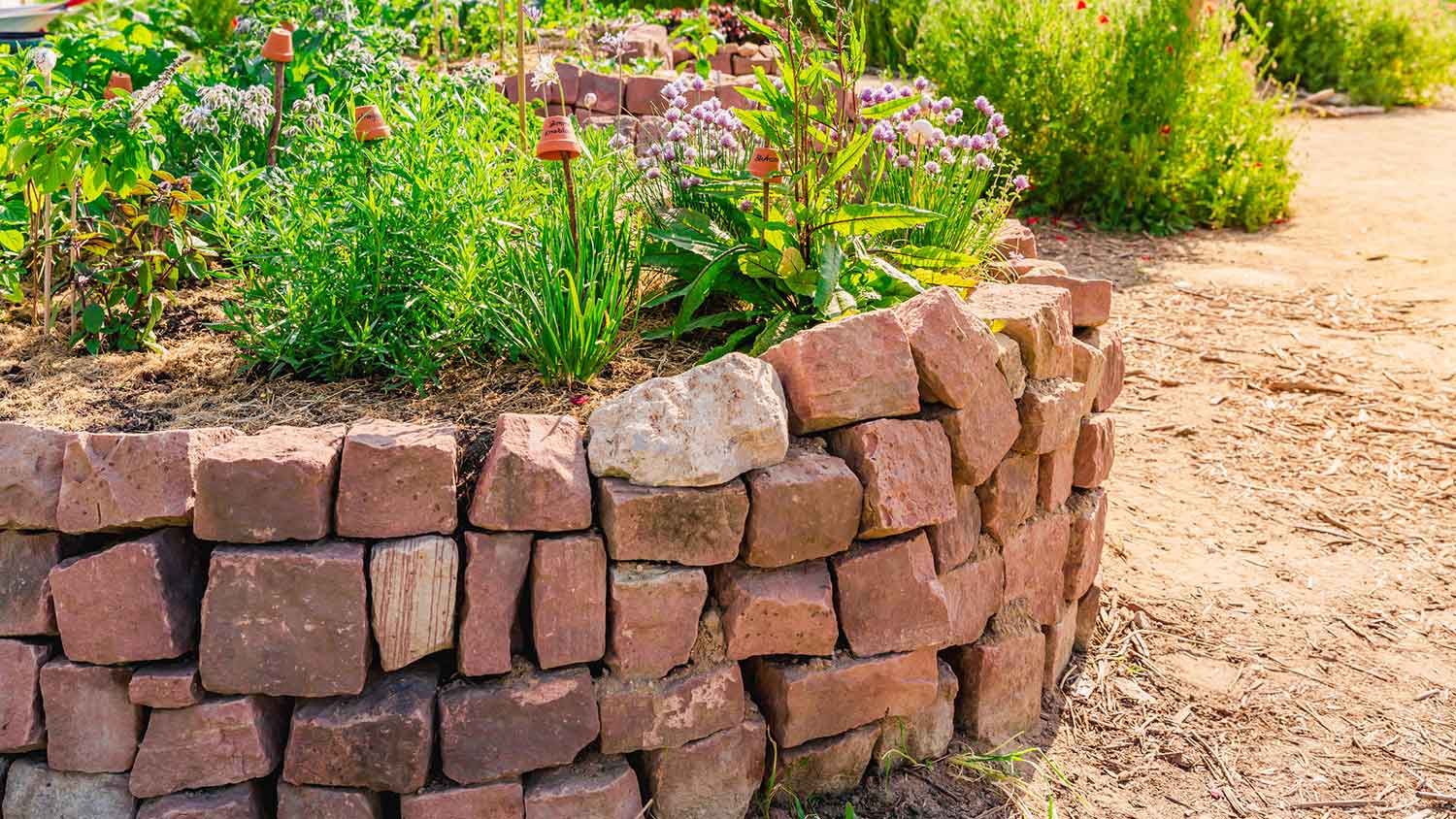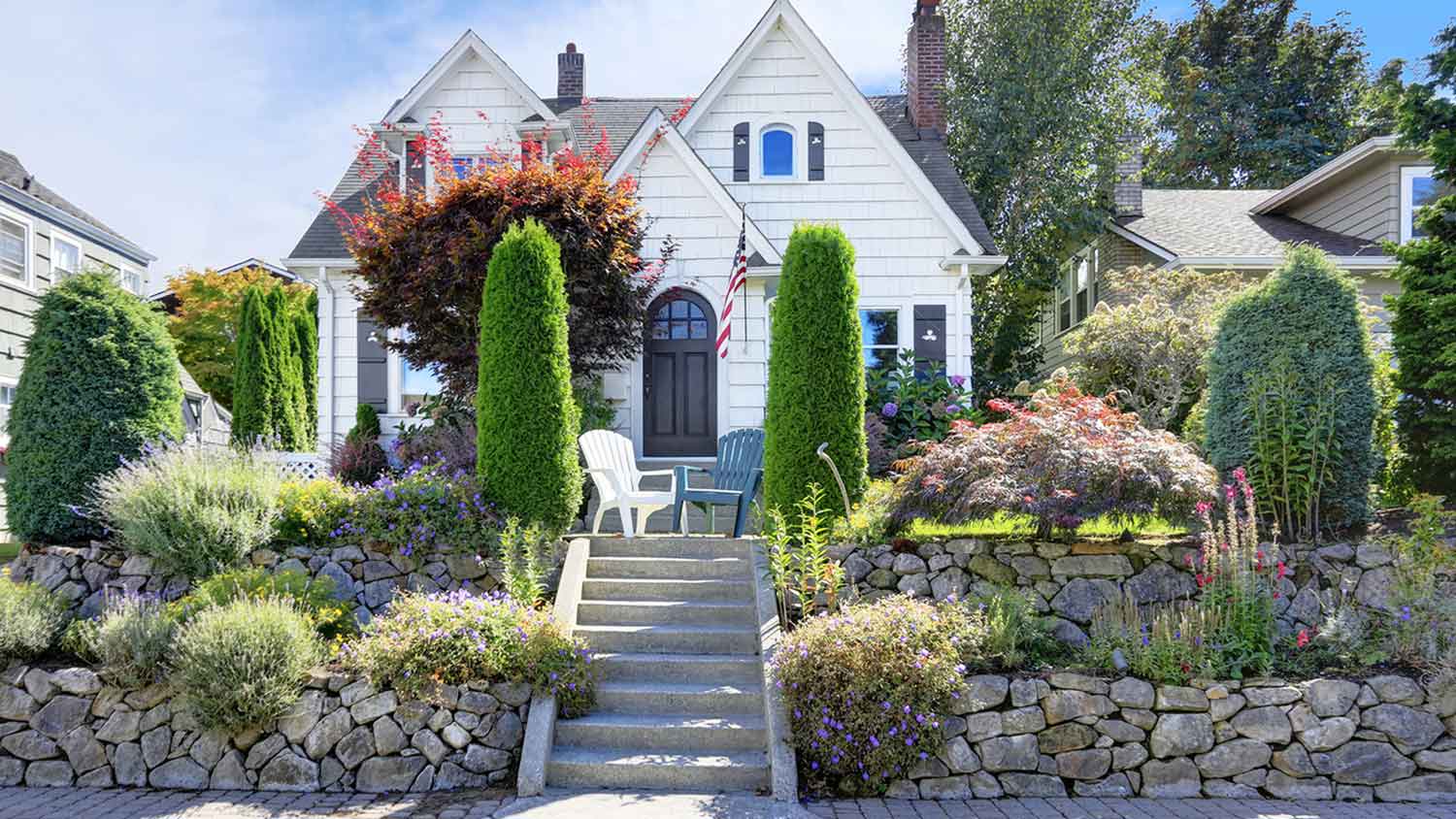
Thinking about installing concrete or brick pavers for a walkway or patio? Learn the cost of interlocking pavers in this informational guide.
Don’t let a landslide happen at home


Inefficient drainage systems, lack of maintenance, poor design and construction, and erosion caused by wave actions are all common causes of retaining wall failures.
Early signs of retaining wall failure include sagging, cracking, soil separation, and surrounding soil collapse.
A new retaining wall costs $6,073 on average.
Retaining wall repairs cost up to $1,500, whereas full replacement can cost between $6,000 to $14,000.
Retaining walls are an essential landscaping structure that helps retain soil within their boundaries. They can prevent erosion and create level changes in landscaping, adding more complexity in depth and height. However, retaining walls can fail and lead to massive soil loss, structural collapse, and other severe consequences. Know the top 8 reasons for retaining wall failures, signs to look for, and what to do to prevent the worst from happening.
If your home has a poor drainage system, rainwater would pool around walls and edges, causing pressure to build up. This makes the retaining walls unstable and can eventually cause them to collapse.
Retaining walls rely on specific, accurate designs to ensure proper pressure distribution, stability, and resistance. There are also different types of retaining walls for different purposes. If your wall was built without using a professionally-drafted design, or without a design at all, chances are it would fail sooner rather than later. Poorly designed backfill, which is the loose material placed behind the wall during installation to ensure effective drainage, can lead to clogging instead, thus reducing the retaining wall’s longevity.

Construction quality is another key factor affecting the durability of your retaining walls. Sloppy construction, improper installation, unstable footing, or cheap materials can all cause them to fail.
Exceeding a retaining wall’s maximum pressure capacity would cause the retaining wall to fail. Overloading happens when too much soil or water piles up behind the wall. It can also happen if you add too many structures to the area behind the wall.
Retaining walls come with weep holes: small openings in the wall that allow water to drain. If they are clogged, the walls will have no other way of letting out the pressure. Like blowing into an already-full balloon, retaining walls will eventually fail as pressure builds up without being released.

Natural soil movement behind the retaining walls can cause them to fail. Soil movements can happen naturally due to strong wind and storms, or result from installing new structures and other mechanical causes.
Wave action refers to water’s movement at the bottom of the retaining wall. Ironically, many build retaining walls to combat wave action in the first place. Wave action gradually washes away soil at the bottom, causing erosion and undermining the retaining wall’s structural integrity. This problem is especially critical in areas prone to flooding.
Natural forces such as frost heaving, soil settlement, and even earthquakes can cause your retaining walls to fail. While you cannot control or remove natural causes that damage your retaining walls, quality construction and proper choices of materials can improve the retaining wall’s resistance against these elements.
Look for these warning signs to spot a failing retaining wall during the early stages:
Sagging or bowing: visible deformation on your retaining wall is the first sign of failure. If your wall looks like it’s bending, there might be something wrong with the structure.
Cracking walls: If you notice cracks in the wall or plants growing out of stone seams, they can be signs of retaining wall failures.
Soil separation: A gap between the retaining wall and the soil behind it can indicate soil movement. Left unaddressed, it will affect the balance and pressure distribution on the wall.
Collapse of soil around the bottom: Soil collapse is a warning sign for erosion and undermining. They can also suggest that the pressure on the wall is going beyond what it can handle.
Contact a retaining wall installer if you notice visible signs of damage, deformation, or soil separation on your retaining wall. While walls don’t fail or collapse right away, it’s best to address the issues as soon as possible because the cost to repair and replace a failing retaining wall is drastically different.
Retaining wall repair costs $100 to $1,500 on average. The price may depend on your local contractor’s hourly standards, the material of your retaining wall, and the severity of damage. Meanwhile, replacing an old retaining wall with a new one starts at $6,000 and can exceed $14,000 in some cases.
Depending on your needs, you can hire different pros for retaining walls. Most residential landscaping companies can build or repair retaining walls. Alternatively, you can also look for specialists with extensive experience in retaining walls.
During the construction phase, there are several tips for your retaining wall project that can improve your wall’s durability. For example, backfill the wall properly as you build to ensure a tightly packed filling. Make sure proper drainage is installed around the wall to prevent water from pooling up. Avoid building the walls too tall to ensure structural stability.
Regular maintenance and inspection are key to preventing retaining walls from failing. Conduct seasonal cleaning so weep holes are clear of blockage. Look for signs of soil movement and erosion so you can refill or rebalance the soil around the retaining wall in time. Regular inspections also help you catch other signs of failure so you can repair the wall before things get worse.
From average costs to expert advice, get all the answers you need to get your job done.

Thinking about installing concrete or brick pavers for a walkway or patio? Learn the cost of interlocking pavers in this informational guide.

Retaining wall repair cost can vary widely based on the age and condition of the wall being restored. Learn why finding the right pro is important for getting the job done.

Pea gravel is a good-looking, versatile landscaping stone that's a favorite of the pros. Read about how much pea gravel costs for both installation and the stone itself.

Reviewing a contractor’s quote is essential when remodeling. By following these five efficient steps, learn how to tell a contractor their price is too high.

Find out how much a concrete retaining wall costs. Get average prices, cost factors, and expert tips to budget and save on your installation.

If your yard is looking drab, installing interlocking pavers can be a smart way to increase your home’s curb appeal. Here are some common questions you’ll discuss with a pro.